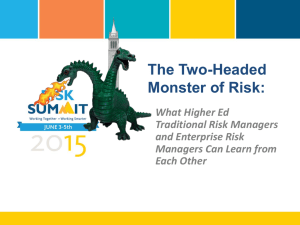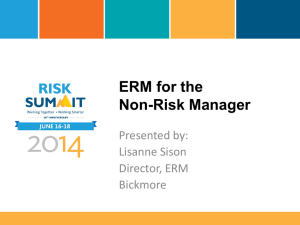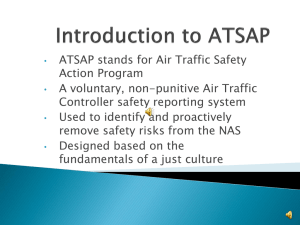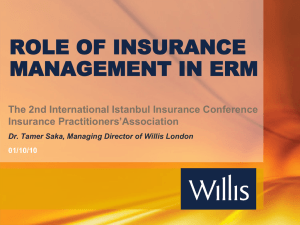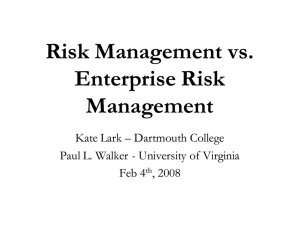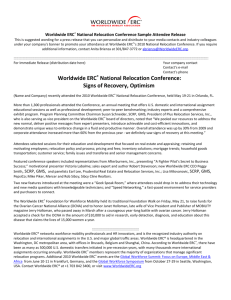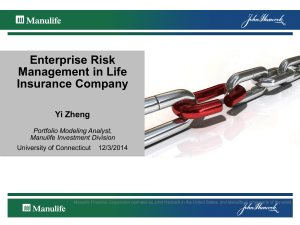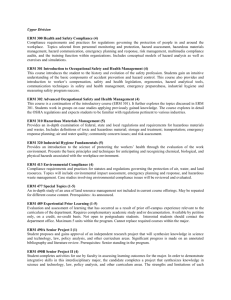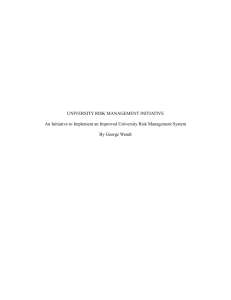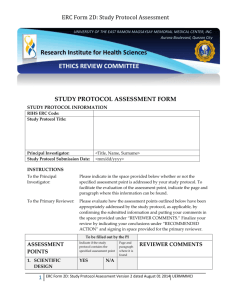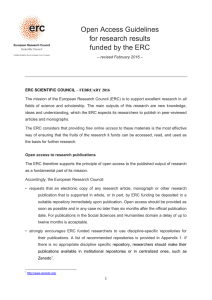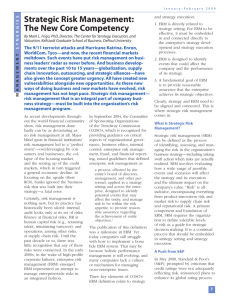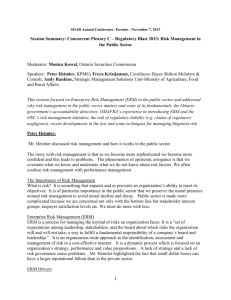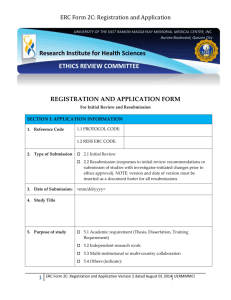Enterprise Risk Council
advertisement
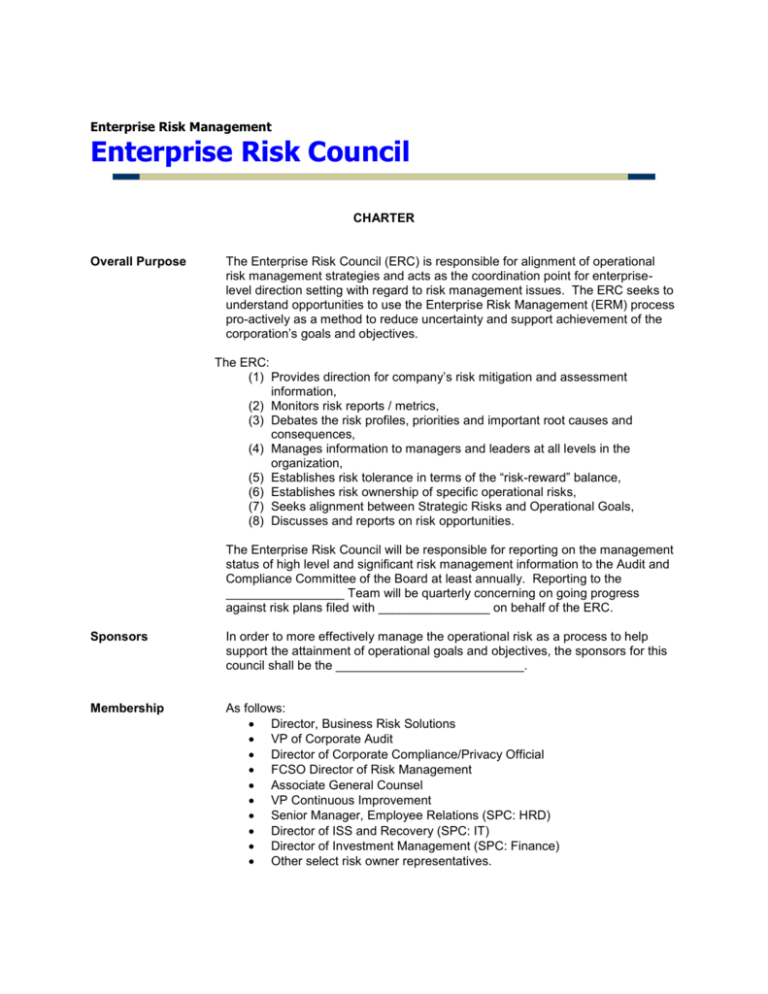
Enterprise Risk Management Enterprise Risk Council CHARTER Overall Purpose The Enterprise Risk Council (ERC) is responsible for alignment of operational risk management strategies and acts as the coordination point for enterpriselevel direction setting with regard to risk management issues. The ERC seeks to understand opportunities to use the Enterprise Risk Management (ERM) process pro-actively as a method to reduce uncertainty and support achievement of the corporation’s goals and objectives. The ERC: (1) Provides direction for company’s risk mitigation and assessment information, (2) Monitors risk reports / metrics, (3) Debates the risk profiles, priorities and important root causes and consequences, (4) Manages information to managers and leaders at all levels in the organization, (5) Establishes risk tolerance in terms of the “risk-reward” balance, (6) Establishes risk ownership of specific operational risks, (7) Seeks alignment between Strategic Risks and Operational Goals, (8) Discusses and reports on risk opportunities. The Enterprise Risk Council will be responsible for reporting on the management status of high level and significant risk management information to the Audit and Compliance Committee of the Board at least annually. Reporting to the _________________ Team will be quarterly concerning on going progress against risk plans filed with ________________ on behalf of the ERC. Sponsors In order to more effectively manage the operational risk as a process to help support the attainment of operational goals and objectives, the sponsors for this council shall be the ___________________________. Membership As follows: Director, Business Risk Solutions VP of Corporate Audit Director of Corporate Compliance/Privacy Official FCSO Director of Risk Management Associate General Counsel VP Continuous Improvement Senior Manager, Employee Relations (SPC: HRD) Director of ISS and Recovery (SPC: IT) Director of Investment Management (SPC: Finance) Other select risk owner representatives. Roles Chief Operating Officer Act as executive sponsor of the ERC, Review and comment on risk activities of the council, Provide direction for the overall Operational Risk Management Process. Director, Business Risk Solutions Act as chairman, set up and lead meetings according to established agenda, Act as “thought leader” for ERM process/concepts, Provide training and education to council members on ERM process, Prepare reports and act as liaison to the COO and __________ Team, Provide primary advocacy of the ERM process to the COO and other leaders, Ensure that significant risks are addressed and significant opportunities for pro-actively reducing uncertainty are advocated. Risk Council Members Review assessment information and work with functional areas and ERM Integrators to accept responsibility for developing pro-active risk mitigation plans according to significant risks identified. Provide regular reporting against established mitigation plans. Pro-actively explore opportunities to reduce uncertainty that will support the attainment of corporate goals and objectives. Support the use of the company ERM process through example and advocacy throughout the organization. Actively engage in council discussions for the purpose of “issue spotting” within the field of responsibility and for other areas as well. Reporting Quarterly to vice president, Corporate Audit, and Risk Management and to general counsel. Annually to the Audit and Compliance Committee of the Board. Quarterly progress against plans to the _____ Team. Frequency of Meetings/Attendance The ERC will meet regularly as required, but not less than quarterly. Additional meetings may be called as needed by the chair. Fifty percent (50%) of the committee members are required for a quorum. Members unable to attend should notify the chair in advance of their intention to send a properly briefed alternate. Consensus is the preferred method of decision making in all situations. Guests may not participate in the decision making process. Decision-Making Only named Council members are voting members (no delegates) Simple majority of members present is required to conclude a decision Delegates may attend meetings, but may not vote Quorum is 50% or more of named members and is required to hold a meeting with any decision-making items. 2




